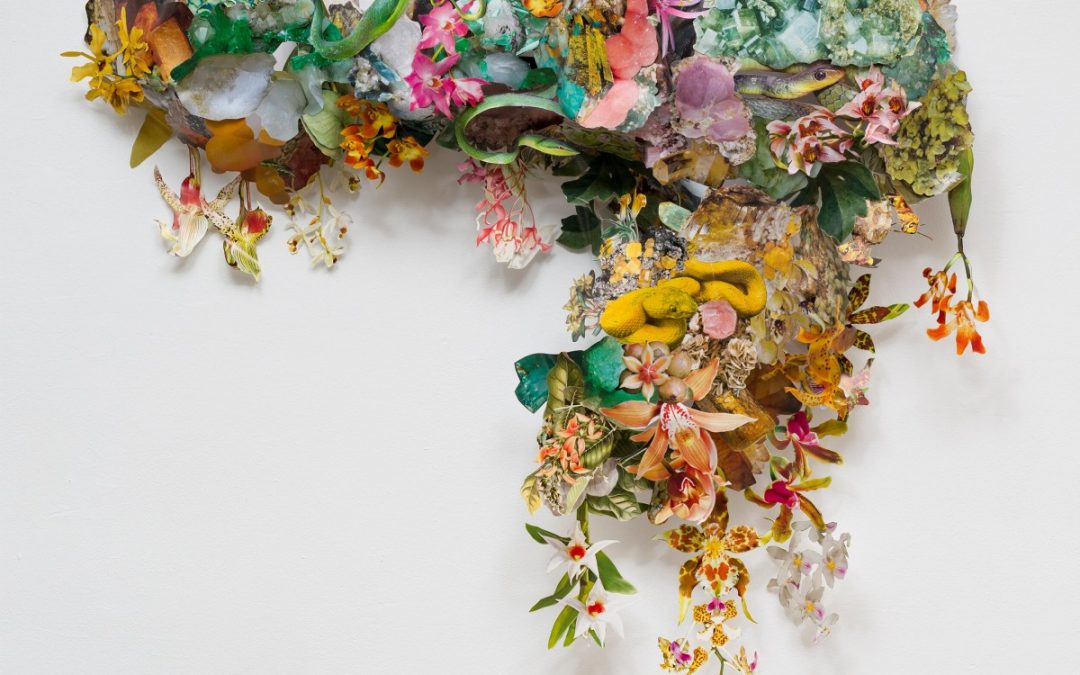Clare Celeste Boersch is an artist living in Berlin who has been doing some version of collage and assemblage since she was a young girl. Growing up in Brazil, she had the ocean, rivers, and jungles that always existed in stark contrast to the industrial cities. “My earliest and most formative memories are of lush, humming tropical ecosystems — and the encroaching industrial landscapes of Brazil’s cities,” she says.
As early as 5 years of age, Clare had already begun “art projects” consisting of rearranged objects she collected at her parents’ home. “They had been traveling the world for nearly ten years at that point, so there were some amazing objects to pull from!”
She began collage around the age of 12 when her father gave her a leatherbound journal in Florence. “I loved it and added to it religiously for the next six years. I still have it in my studio,” she says.
What appealed to her as a young girl about collage was the layering of narratives that she could create. “I thought of it as intimate visual storytelling. I was, and still am, a huge fan of Joseph Cornell’s work, and I think my early collages were very much influenced by his assemblage and collage work.”
Clare states that she has been assimilating to different cultures and environments her entire life — having lived in Brazil, the US, Italy, Honduras, Argentina and Germany. “Collage allows for me to pull together naturalist imagery from across the globe and create a cohesive visual story. Much like my own memories.”
Clare’s collage work eventually developed into installation. Clare has always loved immersive installations and recalls seeing an Olafur Eliasson retrospective in her twenties that had a significant impact on her. But it took several years to discover how to translate her collage into three-dimensional work. “The idea was there long before I had the tools to make it happen, and there was a lot of trial and error! My first installation, Intimate Immensity, was a first step towards immersive work. Since that installation, my work has become more immersive and more consistent.”
Her 3-D work includes many references to nature and the environment. This use is intentional. Pulling images from sources like biodiversity heritage library and Pixabay, Clare uses imagery from 1900 and earlier. “Many species in my artwork have already vanished or are vanishing. This adds a layer of ecological urgency to my work.”
Clare is a naturalist, and nature is her muse. She shares that 70% of biodiversity has been destroyed since 1970. “We’ve forgotten that we breathe the breath of trees, that we’re part of a larger carbon cycle, and that we are enmeshed within the ecosystems we are destroying. We have this illusion of separateness that is driving our ecological crisis,” she adds.
Using tools like photoshop, exact-o blades, and her “trusty glue guns,” each of her artworks, meticulously hand-cut and layered, “speaks to both the fragility and resilience of our earth.”
Clare will be participating in a group show in Berlin that will take place in an old prison. Follow her on Instagram (@clarecelesteart) for more details and to see more of her work.






